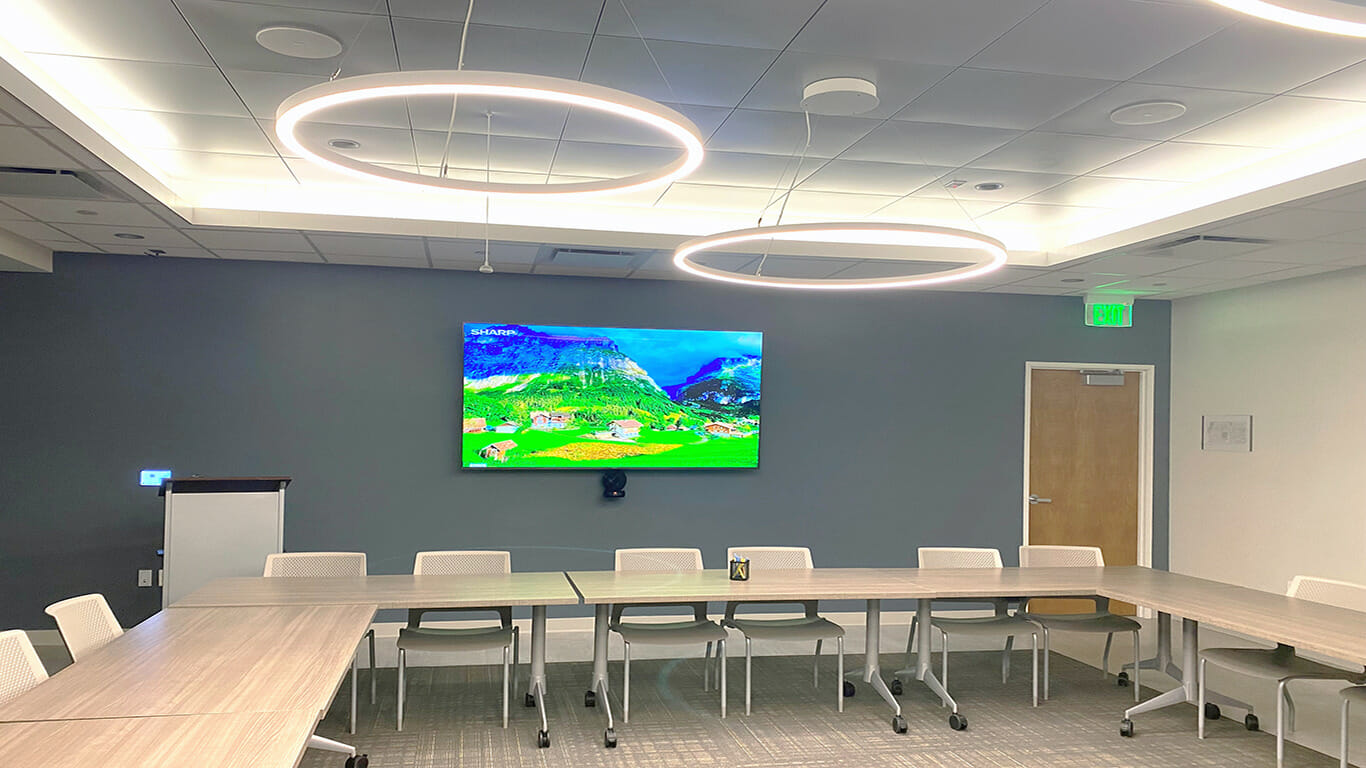
Audio and visual (A/V) technology has come a long way in recent years and is a powerful tool to enhance the learning experience for students. Whether through interactive whiteboards, projectors, or even virtual reality, classroom A/V technology can make boring lessons more engaging and help students understand and retain information better. The use of audio and visual technology in the classroom can also have a significant impact on students’ learning and engagement. Through videos, presentations, or interactive games, A/V technology can provide students with a more dynamic and immersive learning experience. In today’s blog, we will look at some of the benefits of classroom A/V and how it can be used to improve the learning experience in your school.

One of the key benefits of classroom A/V is that it can make learning more engaging and interactive. For example, instructors can use videos to demonstrate scientific concepts, historical events, or other subjects in a way that is more visually appealing and easier to understand. Interactive games and simulations can also help students learn and apply new concepts in fun and engaging ways.
Classroom A/V can help to create a more interactive and collaborative learning environment. For example, students can use digital whiteboards to work together on group projects and presentations or video conferences to connect with other students and experts from around the world. Such technology can foster teamwork and collaboration while exposing students to different perspectives and ideas.
Additionally, A/V technology can provide students with personalized learning experiences. For example, students can use digital tools to create their multimedia projects or adaptive learning software to adjust the pace and difficulty of their learning. This helps ensure that each student receives the support and guidance necessary to succeed.
In addition to improving students’ learning, audiovisual technology can help create a more inclusive classroom and ensures that all students have equal access to the information that is presented. For example, visually or hearing-impaired students can benefit from captioning and audio descriptions.
Overall, the use of classroom A/V can have a positive impact on students’ learning and engagement. By making learning more interactive, collaborative, and personalized, A/V technology can create a more dynamic and engaging learning environment that helps students better understand and retain new information.
Interactive whiteboards are a great classroom A/V tool that can help improve students’ learning abilities.
These boards allow teachers to display digital content, such as videos, images, and animations, in an interactive and engaging way. This can make lessons more dynamic and help students visualize and understand complex concepts. Additionally, interactive whiteboards can also be used for group activities, such as brainstorming and problem-solving, which can foster collaboration and critical thinking skills.
Audio Tools
Podcasts, audio recordings, and language-learning software are examples of how audio can be used to enhance students’ learning. These tools allow students to listen to information at their own pace and can be used to supplement classroom instruction. For example, a student struggling with a particular concept can listen to an audio recording of the teacher explaining it, which can help them better understand the material.
Projectors are powerful tools that allow teachers to display videos, images, and presentations more prominently and visibly to the entire class. Projectors can make lessons more engaging and help students understand and retain information better. They can also be used to display educational videos and animations, which can help students visualize and understand complex concepts.
Virtual reality (VR) technology is becoming increasingly popular in education and is at the forefront of innovation. VR can create immersive experiences that help students retain information better. For example, a VR tour of a historical site can help students understand the context and significance of the site in a way that a traditional history lesson cannot. Additionally, VR can also be used to simulate real-world scenarios, such as medical procedures, which can help students learn in a hands-on and interactive way.
Classroom A/V can be a powerful tool to enhance students’ learning experience. Educators need to incorporate A/V technology into their lesson plans as technology advances to provide students with the best possible learning experience. Whether through interactive whiteboards, projectors, or even virtual reality, A/V technology can make lessons more engaging and help students understand and retain information better.
At CSAV Systems, we are dedicated to delivering exceptional service and solutions to our clients. As a leading AV company in New Jersey, New York, and other states, we specialize in custom design, AV integration, installation, training, service, and support. We pride ourselves on our ability to help our clients understand the best AV solutions for their facilities and are always happy to offer a free systems analysis to anyone in need of an AV consultant. If you’re looking to improve the technologies in your facility, don’t hesitate to reach out to us.